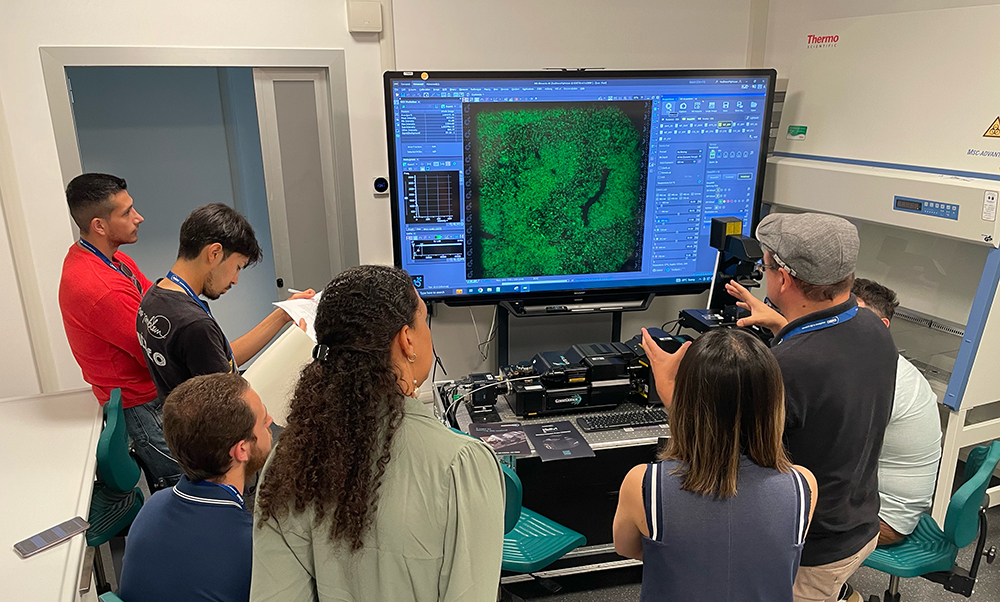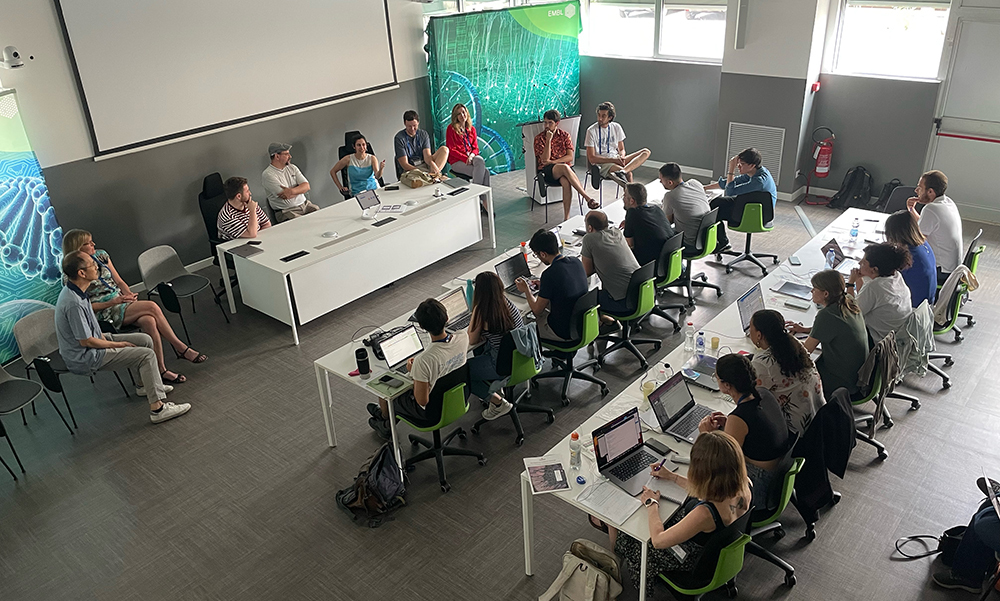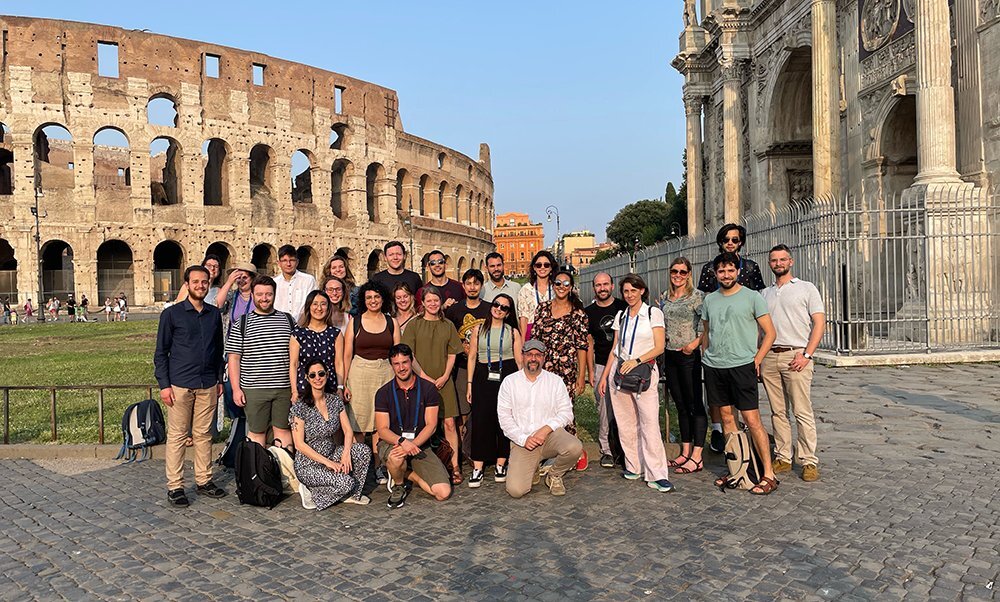
Imaging-based spatial-omics: EMBO Practical Course at EMBL Rome
The first EMBO Practical Course on imaging-based spatial-omics was organised at EMBL Rome to explore the latest techniques to visualise RNA transcripts and proteins in their native tissues

Spatial-omics technologies that combine multiplexed labelling of RNA and proteins with imaging are increasingly sought after by researchers around the world. These rapidly evolving techniques, along with new methods to analyse and integrate data, provide information on the spatial localisation of transcripts and proteins within cells in their native tissues.

The first EMBO Practical Course on imaging-based spatial-omics took place at EMBL Rome on 25–30 June. It was organised by EMBL Rome’s Alvaro Crevenna (Head of Microscopy Facility), Emerald Perlas (Head of Histology Facility), and Sinem Saka, Group Leader at EMBL Heidelberg, with support from the EMBL External Training team for scientific and operational logistic aspects.
The course covered all stages of multiplex immunofluorescence and spatial transcriptomics, including panel design, custom reagent preparation, sample preparation, and data acquisition (with various microscopy modalities), as well as image processing and data analysis.
“We aimed to inform participants about the current landscape of spatial-omics methods and understand the advantages and limitations of different approaches,” said Sinem Saka. “In the hands-on sessions, we focused on open-access methodologies for highly multiplexed RNA and protein visualisation and data analysis. That allowed the trainees to grasp the key concepts behind the many related methods in the field and helped us equip them with the knowledge to set up these methods in their labs under resource-limited conditions.”
Participants were selected based on their need to apply the techniques for their research projects, and the course aimed to include persons with different backgrounds and levels of expertise. During the course, participants had the opportunity to present their projects and plans for incorporating spatial-omics in their research and received personalised feedback from the trainers – all major experts in the field and developers of the methods taught in the hands-on sessions.
Among them were Andrea Radtke for the IBEX approach for cyclic antibody labelling, Sinem Saka for Immuno-SABER for multiplexed protein visualisation and signal amplification, Brian Beliveau for the OligoMiner probe design, Denis Schapiro for the MCMICRO pipeline for multiplexed data processing, Carolina Wahlby for in-situ sequencing and TissUUmaps for RNA transcriptomics and spatial-omics data visualisation, and Omer Bayraktar for WebAtlas pipeline for interactive navigation of integrated single cell and spatial transcriptomic data. “We had great support from the team of trainers for the entire week and the hands-on sessions were encouraging and empowering. It was an exhilarating time of learning together,” said Andrea Radtke, who joined as a trainer from the US National Institutes of Health.
Participants could go back to their labs and implement the newly learned techniques facilitating immediate application in different fields of biology and medicine.

“I think that the high level of engagement we saw from the participants, and their curiosity and eagerness to learn every bit of information to bring back the techniques to their respective labs contributed greatly to the success of the course,” said Emerald Perlas. “The speakers and trainers were excellent, involved, and very approachable to the participants.”
The programme featured theoretical lectures, wet lab activities, hands-on computer sessions, and data analysis. It also included ‘technology lunches’ from some of the course sponsors who presented their imaging and spatial-omics technologies and live demonstrations of state-of-the-art instruments made available by supporting companies.
“The experience provided by this EMBO course was essential to my PhD,” said Jaqueline Geraldis, PhD student at the Brazilian Institute for Neuroscience and Neurotechnology. “I had the opportunity to learn with high-level science researchers. All the lectures and practical classes were well-structured, and the audience could ask questions at any time. The organisers were always there and guaranteed that the entire course happened the best way possible! It was so nice to be at EMBL Rome and I’ll recommend it.”
“It took some extra effort in terms of logistics and local support because it was the first time we organised an EMBO Practical Course at EMBL Rome, but we are very proud to have created this opportunity,” said Alvaro Crevenna. “I hope we will be able to repeat it in the future because we had a great response but could only accept a small number of applicants.”


